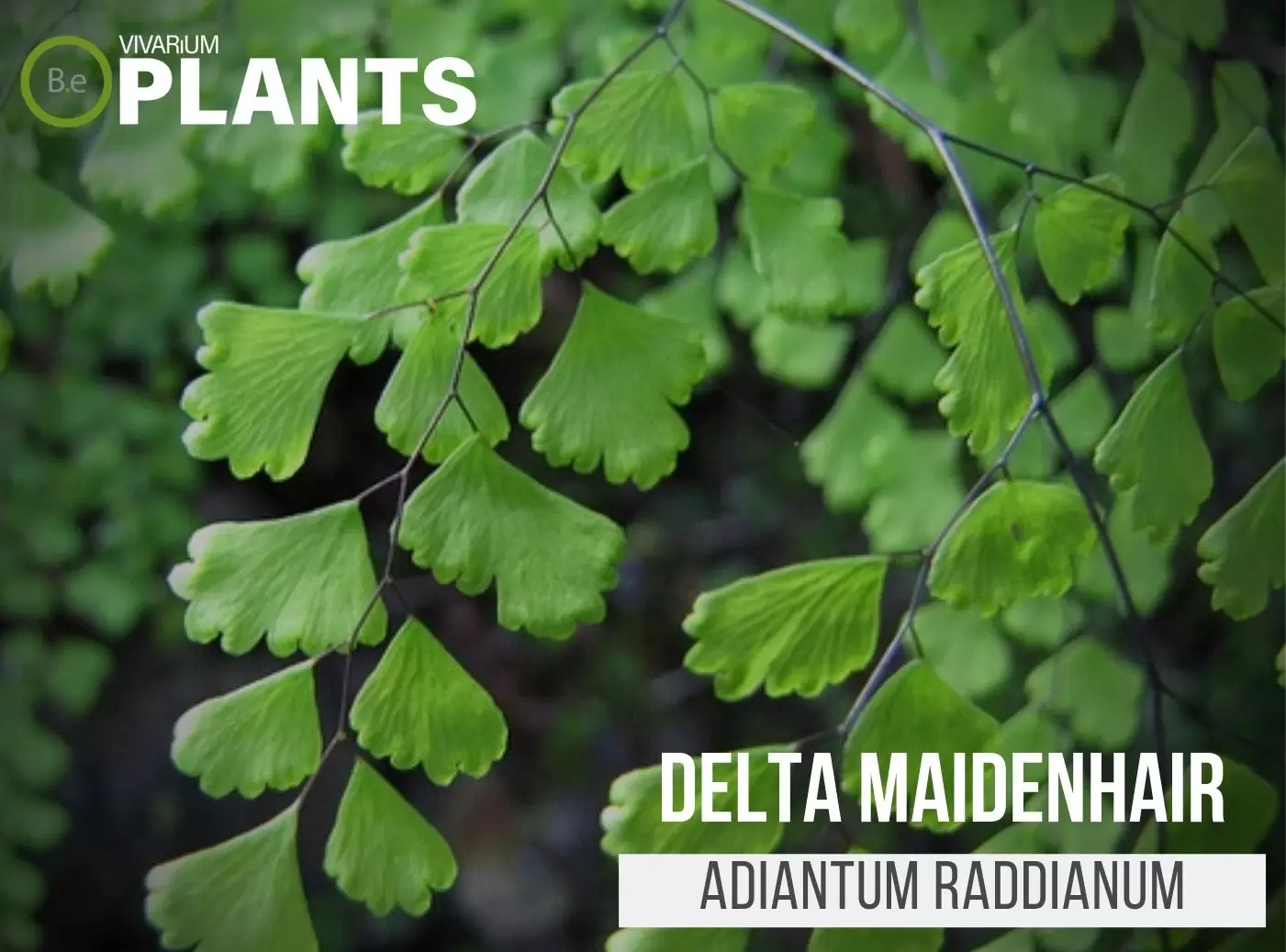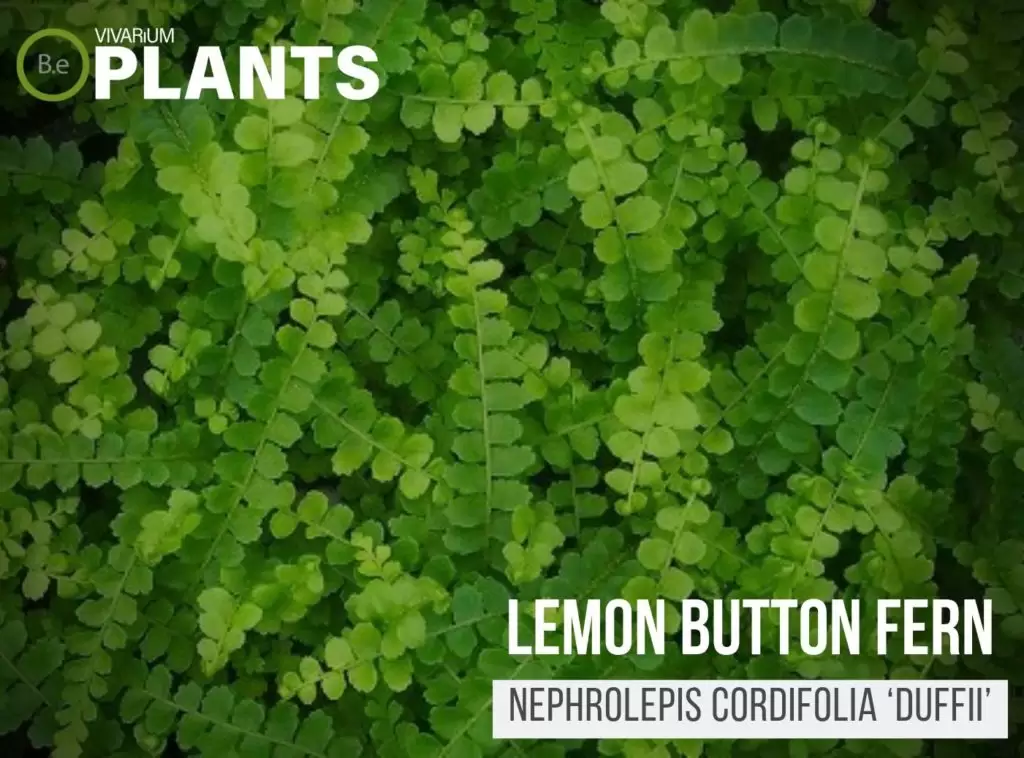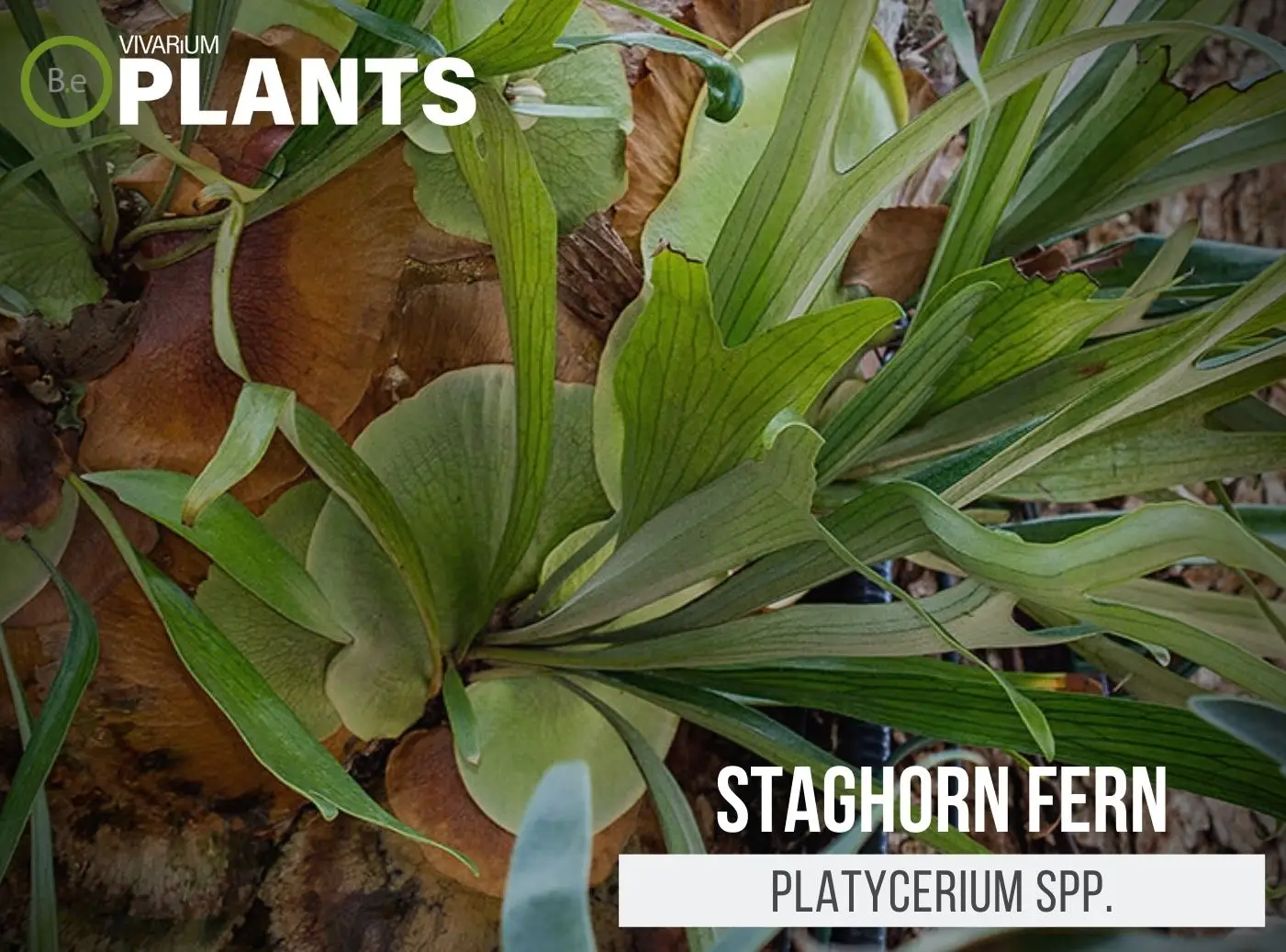Throughout the years, more and more species of plants are being discovered.
The more we learn about them, the more that we are able to properly propagate them.
Of course, this also means that there is a continuously growing amount of vegetation that we have successfully figured out how to grow inside an enclosure.
One of these many species is the African Water Fern.
Although not as common as some of the other aquarium ferns, this plant has become extremely popular in freshwater aquariums.
This article will cover in-depth all the essential information needed to successfully grow and propagate African Water Ferns in a vivarium.
| Quick Stats: | |
|---|---|
| Scientific Name | Bolbitis heudelotii |
| Common Name | Bolbitis, African Fern, Congo Fern, African Water Fern, Creeping Fern, Water Fern |
| Family Name | Polypodiaceae |
| Habitat | Freshwater, Tropical |
| Temperature | 68°F to 82.4°F |
| Height | up to 22in |
| pH | 6.0 to 8.5 |
| Lighting | Bright |
What Is African Water Fern?
Bolbitis heudelotii, more commonly known as African Water Fern is a freshwater aquatic plant known for its distinctly textured leaves and growth pattern.
It is part of the Polypodiaceae family and belongs to the Bolbitis genus. Like many ferns, this plant is epiphytic in nature.
This means that it has the ability to grow attached to porous surfaces such as rocks, driftwood, or even decor.
The plant will absorb all the nutrients it needs through the water instead of the substrate.
The specific species of ‘heudelotii’ was given its name in honor of a French explorer, Jean-Pierre Heudelot.
Among other things, Heudelot was a botanist pioneer who collected plants in Guinea and Senegal from 1828 to 1937.


African Water Fern Facts
Besides African Water Fern, Bolbitis heudelotii is also commonly known as Bolbitis, African Fern, Congo Fern, Creeping Fern, and Water Fern.
This plant’s easy care requirements and interesting look have made its popularity rise as a decorative tool for aquarists.
Due to its shallow root structure, this plant does not need to be buried deep. In fact, it doesn’t have to be buried at all.
As mentioned before, African Water ferns can naturally attach themselves to trees and other unusual locations.
Rather than depending on the soil to nourish itself, it makes use of its surroundings.
It is considered a rather robust plant that will not require an extended care regimen.
Furthermore, these plants will not only help decorate a tank but also purify the water by absorbing excessive nitrate nutrients.
Description
African Water Fern has toothy-looking dark green leaves that may appear somewhat transparent.
They can grow anywhere from 15-40cm long and 15-25cm wide under ideal conditions. The fern itself is not much of a fast grower.
In fact, due to its slower growth rate, it is not as common as some of the other water ferns.
However, once Bolbitis heudelotii has been established and settled in an environment it can reach heights of up to 22 inches.
Much like other ferns, this plant has a creeping rhizome that reaches up to 10 mm in diameter.
From this rhizome, the leaves grow in opposite directions toward one another.
Shallow roots that the plant uses to absorb nutrients also grow in this fashion.
Many hobbyists describe the African Water Fern as having a wiry appearance when grown underwater.
Habitat
Bolbitis heudelotii is native to tropical regions of Asia and Africa. Hence where the fern gets its common name from.
It grows naturally in fast-flowing rivers, lakes, streams, and boggy areas.
African Water Ferns tend to prefer areas where rocky or sandy bottoms are available for them to anchor to.
It is also easily seen attached to rough rocks, stones, or pieces of wood that are found in the water.
This plant prefers mostly shaded spots with fast-flowing water.
These locations provide a comfortable temperature range of 68 to 82.4 degrees Fahrenheit for the fern to be able to grow and propagate.
Although this species might be able to tolerate slightly colder temperatures, the growth of the plant will noticeably slow down if it drops below 68 °F.
PH Preference
pH ranges are used to specify how basic or acidic a water-based solution is.
This is especially important when it comes to vegetation because it can drastically affect the availability of nutrients to the plant.
A pH level of 7 is considered neutral. Meanwhile, a pH below 7 is acidic and a pH above 7 is alkaline.
African Water Fern requires moderately acidic to neutral water with a pH range of 6.0 to 8.5 in order to flourish.
The plant does not tolerate hard water at all and does best within a 4 to 12 dGH hardness range.
Vivarium Type
This type of fern will do great in a variety of vivarium types.
When deciding if rather or not to use this floating fern in a particular type of enclosure, make sure to go with setups that have significant amounts of water features.
Here are recommended vivariums Bolbitis heudelotii will do well in:
- Paludariums – Half aquatic/ half terrain-based enclosure.
- Ripariums – Mostly aquatic-based enclosures with some terrain features present.
- Aquarium– Fully aquatic-based enclosure with little to no dry terrain.
Vivarium Placement
As mentioned before, African Water Fern is a true aquatic fern. Therefore, the plant will not do well in environments that lack water.
Avoid placing the plant above the ground where it will be too dry.
Since it can grow tall, many aquascapers will attach this fern to items at the bottom of a tank.
This way the plant is given all the vertical space necessary to reach its full potential.
Such placement also helps in adding depth and enhancing areas of the aquarium that might otherwise seem dull.
Similar to some other aquatic plants, African Water Fern can also serve as a hiding spot for small fry and creatures that inhabit the tank.
Substrate
African Water Fern technically does not require any particular aquatic substrate. In fact, the plant is technically not grown fully planted.
The rhizome of this fern should never be buried beneath the substrate, as it will rot and die off.
Instead, it should be tethered on top and visible to the eye. The only thing that will be buried in the shallow roots.
Unless the plant is being grown epiphytically. In this case, it will simply stick to the surface and remain fully exposed.
Lighting
As far as aquatic lighting goes, African Water Fern is not too picky.
The plant prefers low to moderate lighting, but it can still tolerate some level of higher intensity.
The amount of light that the fern receives will affect its appearance.
For instance, high light levels will make the leaves look more translucent green.
Meanwhile, low light will result in darker green leaves.
When setting up lighting inside an aquarium, fluorescent, incandescent, or LED lights work extremely well.
Try to go for cool colors that resemble a bright but shaded day.
Avoid any type of light that has high levels of UV rays. If the vivarium will not stock any type of artificial lighting, try placing it near a bright window that does not receive direct sun exposure.
Buy African Water Fern
When looking to purchase African Water Fern, there are a few key indicators you should look for.
Buying the best quality plant will help give you the best shot at growing the fern successfully.
The foliage should be snail free along with any other type of pest. The plant should arrive with healthy and unharmed rhizomes.
If these are damaged, it will make it extremely hard if not impossible to grow ferns.
Try to stay away from sources that provide dried-out or dull-looking plants. Click the image below to find out more about the current price and other relative info:


African Water Fern Care and Propagation
The best type of care for African Water Fern is maintaining proper water parameters.
Liquid fertilizer and CO2 can be used every once in a while to promote new growth and keep the fern healthy.
Although the plant does not require much care and maintenance there are a few things that should always be kept in mind to give it the best chance at success.
Things such as the adequate amount of lighting and proper pH levels will help make sure Bolbitis heudelotii remains strong and vivid.
How to grow
African Water Fern can be propagated through the process of division. The rhizomes of the plant should be carefully separated.
Try not to break off any roots, since that will shock and damage the fern. Then take the new pieces and move them to a new location.
Unless the plant is being placed on the substrate, make sure to attach the baby ferns to a porous surface like rocks or driftwood.
The fishing line or the cotton thread will aid in latching until the roots can fully anchor themselves.
Be sure to be gentle with the roots when repotting. They are known for being rather gentle and breaking off easily.
Last but not least, keep in mind that clean water and avoiding too much light will help keep algae from growing in the fern.
Watering
African Water Fern is a freshwater, aquatic plant and will almost always remain fully submerged.
With that being said, the plant does not tolerate saline water. Clean fresh water will always be the best option when it comes to this fern.
Bolbitis heudelotii will not require an actual watering routine. However, there are a few important factors to keep in mind for a healthy plant.
Periodic water changes and cleaning of the tank will aid in the fern’s overall health.
In addition, making sure that there is a steady amount of water flow will also be very important to the successful upkeep of this fern.
Plants Similar To African Water Fern
Even though some hobbyists enjoy sticking to a specific theme when building an enclosure, that does not mean that only one type of plant must be used.
Adding diversity and versatility is crucial to creating a captivating vivarium.
Mix up the look of your vivarium with different flora that can easily co-exist in the same types of environment.
Not only will it be more pleasing to the eye, but it will also make the tank look more realistic.
Furthermore, if for some reason you are having a hard time getting your hands on this plant…
Here are some other options that may do well with or in the place of Bolbitis heudelotii:
Conclusion
Overall, African Water Fern is a great addition to most vivariums with aquatic features.
Whether you are just getting started or simply looking for something new to add to your planted tank, this fern will not disappoint.
I would consider this aquarium plant at an intermediate level when it comes to care and reproduction.
It will not be hard to keep in an enclosure, but it will require some upkeep and close attention.
Have you had any experience growing Bolbitis? What was your experience like? What would you say are the pros and cons of the plant?
Frequently Asked Questions
African Water Fern does not need a particular substrate, and should not be planted too deeply. The rhizome should be tethered near the surface, where only the shallow roots will be buried. If grown epiphytically, the plant will stick to the surface and remain fully exposed.
Yes, African Water Fern can grow out of water. This aquatic plant can tolerate saturated or swampy conditions, and even thrive in flooded environments. It prefers being underwater, but can survive in moist soils if adequate humidity and partial shade is provided.
Yes, African Water Fern can grow without CO2. Although they may not reach their full potential without it, they are a low light and nutrient tolerant species, and can thus still thrive in aquarium environments without CO2 added to the tank.
Bolbitis heudelotii, an aquatic fern, grows moderately and usually needs little direct maintenance. In ideal conditions, with regular fertilizer and partial water changes, it can grow up to 1 inch per month.



